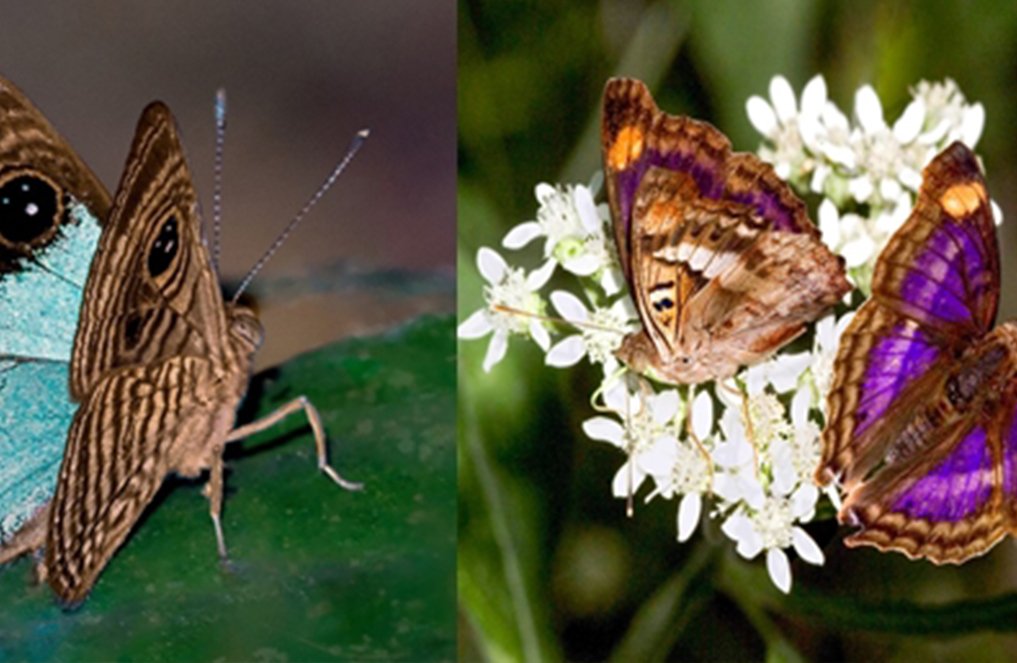Gene controlling surface-specific butterfly wing patterns
NUS biologists have discovered that the gene apterous A in butterflies is responsible for the development of unique dorsal wing patterns and colours.
Have you ever startled a resting butterfly and noticed that it has different colours and patterns on its dorsal (upper surface) and ventral (underside) wing surfaces? This surface-specific diversity in patterns evolved because the dorsal and ventral wing surfaces serve different signalling functions that help in the butterfly’s survival and reproduction. As butterflies sit with their wings folded, the exposed ventral surfaces usually help to camouflage it from predators. On the other hand, the hidden dorsal surfaces have bright colours to attract potential mates. However, the mechanisms involved in the development of these distinct differences in butterfly wing patterns are not clear.
Prof Antónia MONTEIRO and her Ph.D. student, Ms Anupama PRAKASH, from the Department of Biological Sciences, NUS discovered that the gene apterous A is responsible for the development of the unique wing patterns found on the dorsal (hidden) surfaces of butterfly wings. Using the African squinting bush brown butterfly, Bicyclus anynana, Ms Prakash found that this gene is expressed solely on the dorsal surfaces of butterfly wings during their developmental stage. When this gene is removed from their genome using a gene knockout process, the dorsal wing patterns of butterflies with the mutated genome develop the same patterns as their ventral wings. The research team also found that the apterous A gene inhibits the formation of eyespot patterns on the butterfly wings.
Ms Prakash said, “This study has identified a gene that influences surface-specific wing patterns in butterflies. This can potentially be used as a biomarker to understand how specific cells produce the different colours and patterns that we see on butterfly wings.”
Prof Monteiro added, “In the evolution of butterfly wing patterns, eyespots appeared on the dorsal wing surfaces of butterflies long after their origin on the ventral surfaces, but the reason for this was unclear. We discovered that apterous A gene expression was locally absent in small regions where a few dorsal eyespot centres appear, and this local repression is likely to have caused eyespots to finally develop at these locations.”

Butterflies with their dorsal and ventral wing surfaces visible, illustrating surface-specific pattern variations. (Left) Lycaenid butterfly, (middle) Gneris Eyemark (Mesosemia gneris) butterfly, (right) Pavon Emperor (Doxocopa pavon) butterfly. [Photo Credit: (left) Anupama Prakash, (middle and right) Rick CECH]
Reference
Prakash A*; Monteiro A*, “apterous A specifies dorsal wing patterns and sexual traits in butterflies” PROCEEDINGS OF ROYAL SOCIETY B DOI: 10.1098/rspb.2017.2685 Published: 2018.
